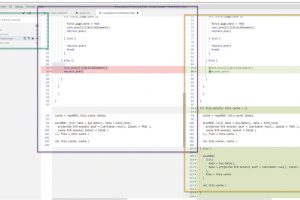By Ted Gotsch
The release of the Academy’s Social Security Challenge is being praised by the public, policymakers, and in the press alike as an effective way of raising attention to the high-stakes issues facing the nation’s primary federal retirement program and how it can be fixed.
An interactive web-based app, the Social Security Challenge explains the current financial state of Social Security to users and allows them to consider different scenarios that would close the financing gap so it could continue to fully fund the benefits older Americans are entitled to receive under the program. Those scenarios include cuts to Social Security benefits, increases in taxes, or a combination of both.
“The Academy is pleased at the reception the Challenge has received from a host of stakeholders around the country,” Academy Senior Pension Fellow Linda K. Stone said. “From the start, our intention was to help Americans achieve a better understanding of Social Security and what options existed to address its financing challenges.”
The app’s rollout caught the attention of Rep. John Larson of Connecticut, the ranking member of House Ways & Means Social Security Subcommittee, who contacted the Academy directly to say he was “really pleased with the stuff you’ve been doing around taking the Social Security Challenge.”
Emerson Sprick, senior economic analyst for the Bipartisan Policy Center, told The Street that he was “optimistic that The Social Security Challenge can help Americans think more clearly about the problem at hand and the compromises we must make.”
The app was developed by the Academy as a public service to objectively inform, stimulate, and advance the public dialogue on Social Security reform, drawing on the U.S. actuarial profession’s knowledge and expertise on risk and financial security issues and the Academy’s extensive body of work informing and advising policymakers on Social Security’s financial condition and reform options.
Challenge users visit “Townsville” and select specific locations—the park, the gym, a grocery store, and a coffee shop. They meet regular people going about their lives who share their stories and thoughts with one another about various Social Security options and their potential impact. The characters in the Challenge include people in various life stages and those in different life circumstances.
The financial effects of the reform option provisions in the Challenge come from the Office of the Chief Actuary at the Social Security Administration and are based on the most recent Summary of Provisions that Would Change the Social Security Program. An updated version of the report is expected shortly.
Finding answers to ensure the retirement program’s solvency is a serious matter. Trust fund reserves are small compared to the value of all the benefits that Social Security will pay and are declining. They are invested in special-issue U.S. government bonds. Because the trust fund reserves are being depleted, the recent interest rate increase is not expected to significantly affect the future trajectory of the Social Security trust fund balance.
A smaller working population relative to beneficiaries means there are fewer workers paying taxes to support each beneficiary. The retirement of the baby boom generation is increasing the number of beneficiaries faster than the increase in the number of covered workers, as lower-birth-rate generations enter the workforce. This imbalance will persist indefinitely and fundamentally change the age distribution of the population.
The number of Americans 65 and older will increase from about 58 million in 2022 to about 75 million by 2035. According to the 2023 Social Security Trustees Report, Social Security’s combined trust fund reserves are projected to become depleted in 2034, potentially leading to a forced 20% cut in payable benefits unless legislative changes are adopted to prevent it.
Assuring that Social Security stays strong means that Congress would need to evaluate very different reform options with complex and wide-ranging impacts—options such as making higher levels of income subject to the portion of payroll taxes or raising Social Security’s normal retirement age—and then pass the reforms it chooses so that they can become law.
The Challenge app allows users to develop a reform approach by traveling through the virtual town and puzzling through choices. In the finale, participants select and submit an approach from a palette of possible reform options and see how well it works to address the solvency issue. Experts said the app gives users a realistic taste of the serious choices facing the nation when it comes to Social Security.
“I think it really translated it to the stakes for ordinary people,” said Kathleen Romig, director of Social Security and disability policy at the Center on Budget and Policy Priorities. “It didn’t feel—no offense to actuaries, but it’s not as if you were reading a dense actuarial report or something like that. You were hearing from typical people and how these issues impact them.”
Mark Hulbert, author of the Retirement Weekly column at MarketWatch, wrote, “If you had any doubt that there are numerous ways in which Social Security’s solvency can be restored, you should take the ‘Social Security Challenge.’”
TED GOTSCH is the Academy’s senior policy analyst for content and publications.
Getting the Message Out
The release of the Social Security Challenge on March 15 has resulted in a significant response as shown by media mentions, the number of people visiting the Academy’s website, and social media traffic.
The Challenge has garnered more than 350 news mentions thus far, appearing in such outlets as CNBC, Yahoo! Finance, MarketWatch, Fortune, the Los Angeles Times, and The Arizona Republic. In published reports, journalists have heralded the Challenge’s ability to engage Gen X and young generations on the topic of Social Security, among other things.
More than 34,000 people have come to the Challenge webpage. Once there, in excess of 10,000 have clicked on it and taken the Challenge. Of those coming to the Challenge page, more than 25,000 are new visitors to the Academy website.
It’s also made a big splash across the internet, as social media statistics show:
YouTube
295,900 impressions
570 link clicks
28,885 video views
222,993 impressions
30,600 link clicks
59,315 video views
Native Ads
177,264 impressions
929 link clicks
26,965 impressions
734 link clicks
20,297 video views





